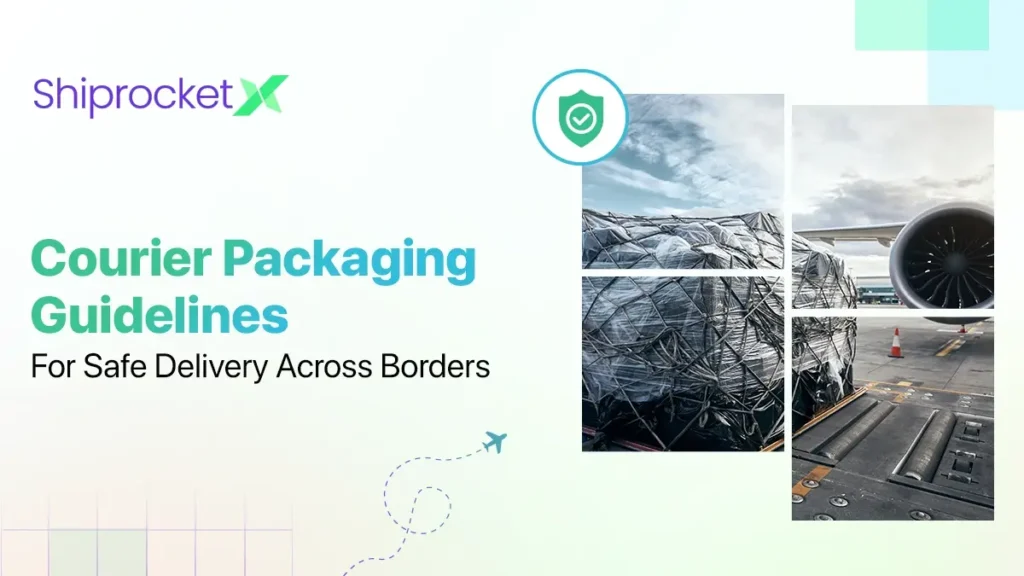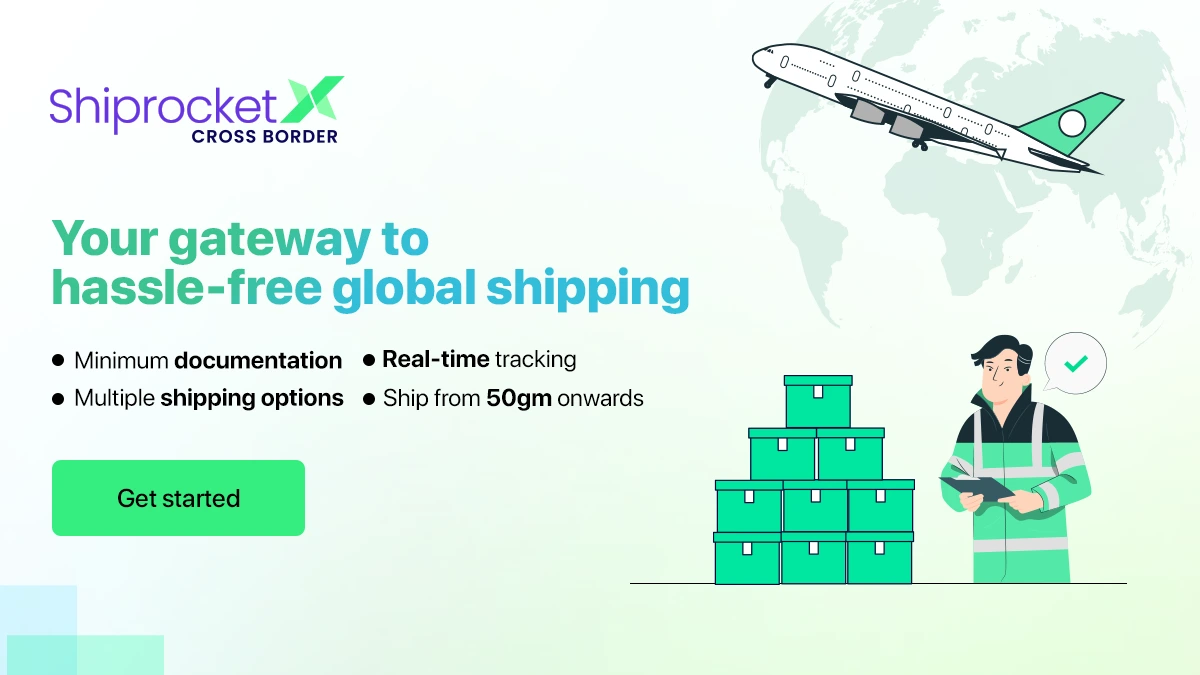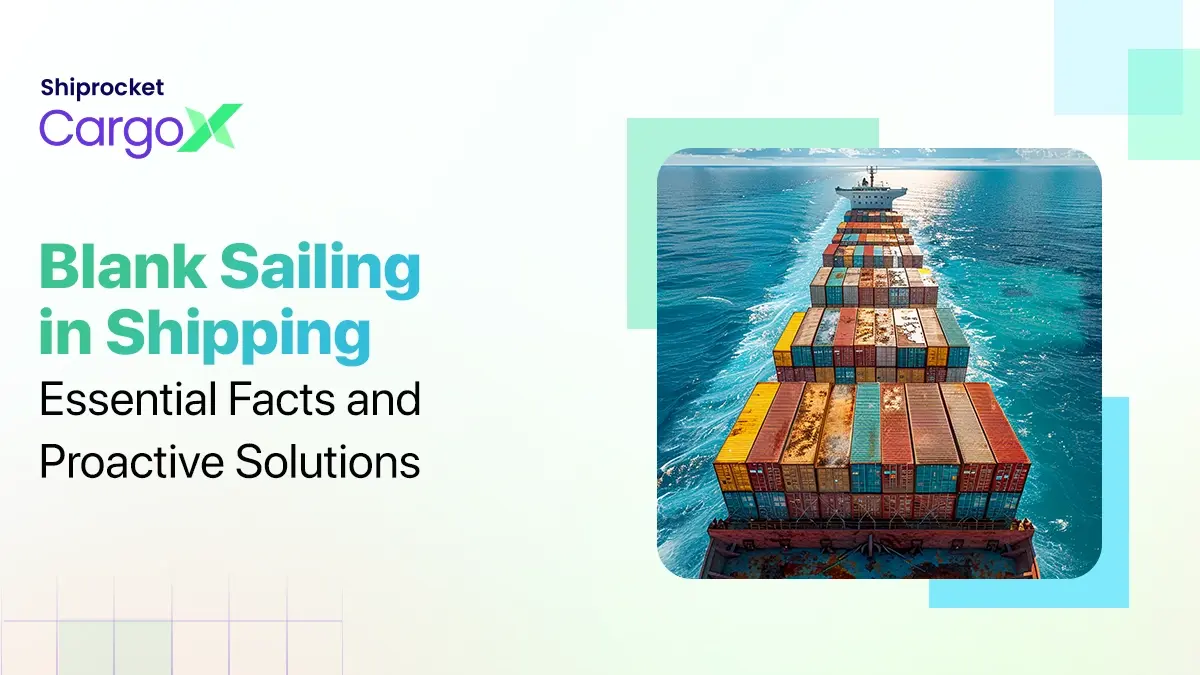Packaging Guidelines for International Courier/Shipping Services
Are you about to send a package overseas but are unsure about the next steps? The first step in ensuring that your courier arrives at their destination intact is to pack them carefully. According to studies, 11% of things are damaged during transportation, and this can cost businesses a lot. Customers now are more conscious of packing quality than they were in the past, which has a direct impact on how they see your company. So, it is critical to understand the key components of packing and exporting freight abroad, regardless of the size of your package.
Here, we will explore packaging guidelines for international courier services and do’s and don’ts to ensure smooth and secure shipment.

General Guidelines For Proper Packaging of Shipments For International Shipping
Even though it might be difficult to effectively navigate the world of international shipping, with enough preparation, your package can arrive at its destination promptly and safely. This comprehensive guide will help to guarantee a seamless cross-border transportation experience.
- Research Regulations: Be sure to educate yourself about the import laws of the recipient’s nation before packing even one box. Restrictions on particular goods or materials can be found by conducting a brief web search or contacting the embassy. It is possible to avoid delays or even having your items confiscated at customs by being aware of these restrictions.
- Complete and Clear Labelling: A foreign shipment’s success depends on the clear labelling it provides. Invest in premium labels that will show your name, full address, and phone number on the package. Make sure the complete address, phone number, company name (if relevant), and full name of the receiver are displayed on the destination side.
- Selecting Appropriate Packaging: Avoid reusing outdated cartons. Invest in brand-new, double-walled cardboard boxes made especially to resist the rigours of foreign shipment. During transit, these boxes provide excellent protection from crushing, stacking, and bumping.
- Customs declarations: International customs demand correct information about the contents and value of your cargo. Failure to disclose an item or underestimating its worth may result in delays, penalties, or even confiscation. Describe each item honestly, noting its amount, composition of materials, and fair market worth.
- Think About Insurance: Although it’s not usually required, getting shipping insurance gives you a lot of peace of mind, especially if you’re sending delicate or expensive things. In the event that your investment is lost or damaged while in transit, insurance protects it.
- Tailored Shipping Solutions: The world of international shipping provides a range of choices, from economical ocean freight to lightning-fast air freight. When deciding on the best option, take your shipping deadline and budget into consideration.
- Effective Packing Methods: Stuff any empty spaces within the box to prevent items from moving around inside. Use packing peanuts, bubble wrap, or air cushions to guarantee a snug fit and lower the possibility of damage. Remember to use strong packing tape to guarantee a properly sealed box.
- Working with a Reputable Shipper: Investing in a reliable shipper may pay off handsomely. They can help you sort out any issues you may be having with shipping, locate the most affordable and efficient shipping solution for your specific needs, and negotiate the complexity of international shipping regulations.
Tips For Packing Special Items
When packing special or delicate items, you should follow the below detailed guidelines:
Choosing the Right Container:
- Strength is Important: Choose a container that is strong enough to survive the challenges of transportation. It’s best to use brand-new, empty cardboard boxes, especially the ones with two walls, for added strength. Steer clear of cheap, repurposed crates that might not provide enough protection.
- Size Is Important: The container needs to be somewhat bigger than the object or items you’re storing. This gives you space to fill in protective layers to the package.
- Smaller Valuables: Smaller valuables could be better kept in polybags or cushioned envelopes. Since they’re lightweight, you have to handle them carefully.
Proper Cushioning for Fragile Cargo:
- Choosing a Cushion: The kind of cushioning material you use will rely on how valuable and fragile your possessions are.
- Better Protection with Bubble Wrap: Bubble wrap is recommended for extremely valuable or delicate products. It reduces the chance of harm by offering superior cushioning and keeping objects firmly in place.
- Additional Protections: Airbags and pre-formed foam corners are useful for adding extra protection, especially for vulnerable corners and edges. These stop objects from moving and from absorbing shocks as they are being transported.
Fill Empty Spaces and Secure the Package:
- Prevent Shifting: To stop your possessions from shifting within the container, fill any vacant spaces with appropriate packing materials.
- Large Cargo Needs Extra Security: For best safety, fasten larger objects to the container’s base before putting them inside.
- Sealing Issues: To ensure a secure closure, use sturdy packing tape. Steer clear of flimsy techniques like paper or rope. To prevent products from moving during shipment, use plastic wrap on individual items and apply heat to shrink them while shipping pallets.
Fragile Labels for Special Care:
- Notify Carriers: It’s critical that you designate your products as “Fragile.” With these labels on shipments, carriers will treat your things more carefully, lowering the possibility of damage.
- Label Design: For the greatest effect, make sure your delicate labels are large, clear, and striking.
Choosing the Right Carrier Makes a Difference:
- Safety-Focused Carriers: Select a carrier with an established track record of cautious handling when working with special cargo.
- Carrier Insight: Certain carriers could provide guidelines for packaging as well as requirements for external packaging.
- Limitations and Weather Considerations: Certain carriers impose limitations according to the weight, kind, or final destination of your package. The safety of your belongings may also be impacted by local weather conditions. When sending products that are susceptible to temperature changes, such as food or plants, use extra caution and specialised carriers.
The Best Practices for Packaging Goods for International Shipping
Sending expensive or special cargo overseas can be stressful. Here are some crucial packing dos and don’ts to make sure your foreign cargo arrives at the destination securely and safely:
Do’s
- Research Guidelines: Learn about the customs laws and packing specifications of the target country before shipping anything.
- Seal Tightly: To safely seal your item, use premium packaging tape made for shipment. Make sure all seams are sealed shut and strengthen vulnerable areas like corners and edges.
- Select Sturdy Materials: When choosing materials for international shipment, aim for robust and long-lasting options like corrugated containers or cardboard boxes.
- Make a Clear Label: Precise labelling is crucial. Put the full address of the receiver on the parcel, along with the postal code. To warn handlers about the contents, consider using international shipping labels that say “fragile,” “handle with care,” or “dangerous goods” (if needed).
Don’ts:
- Overpacking or Underpacking: Adding too much packaging material raises expenses and puts strain on the contents, and packing lightly allows objects to move and clash while travelling.
- Using Poor Supplies: Using cheap packing materials could jeopardise the security of your belongings. Proper cushioning shields objects from collisions and shocks. Use the right cushioning materials to provide a layer of protection for your items.
- Disregarding Weight and Size Restrictions: Investigate rules and regulations in the destination country where your package is being shipped. This prevents further fees or a package rejection. Take package size and weight into account when calculating dimensional weight for shipping purposes.
- Ignoring Rules: If you don’t follow shipping and customs laws, You risk delays, penalties, or even having your products seized. Examine the banned goods, export or import limitations, and any particular paperwork needed for the destination countries. To avoid problems, make sure your customs declarations are thorough and precise.
Bonus Tips:
- Consider using a reliable freight forwarder, especially for bulk goods, to help navigate customs and save time.
- Invest in cargo insurance for financial protection in case of damage, loss, or theft during shipping.
- Be transparent with your customers! Inform them about shipping times, costs, and potential delays. This will build trust and reduce customer inquiries.
Expand Your Business Globally with ShiprocketX: Streamlined International Shipping Solutions
ShiprocketX can make international shipping easier if you’re thinking about growing your company internationally. Their all-inclusive cross-border solutions are made to facilitate global consumer reach. With ShiprocketX, you can send your worldwide orders to more than 220 international destinations. They take care of everything, including customs clearance and shipment, so you can concentrate on expanding your company. Utilising their platform, which offers a variety of shipping options suited to your company’s needs, is the simplest method to ship worldwide. They can handle urgent shipments in as little as 4 days or reasonably priced deliveries in 10–12 days. A customised tracking page to increase client loyalty and shipment security coverage to protect your shipments from in-transit hazards are additional benefits of using ShiprocketX. With specialised account managers and streamlined return management, you can effortlessly oversee your global operations.
Conclusion
There are several factors to take into account when exporting internationally, which may be extremely challenging. Ensuring that your packaging meets all customs rules in the countries to which your items are being shipped and keeping them secure throughout transit depends on how well-made they are. Making sure your goods arrive at their destination on schedule, undamaged, and without encountering any legal problems should be your main priority. You can guarantee a seamless and trouble-free procedure, ensuring that your goods reach securely and on schedule, by paying close attention to how you pack your items and being fully aware of the nuances of international shipping standards.





